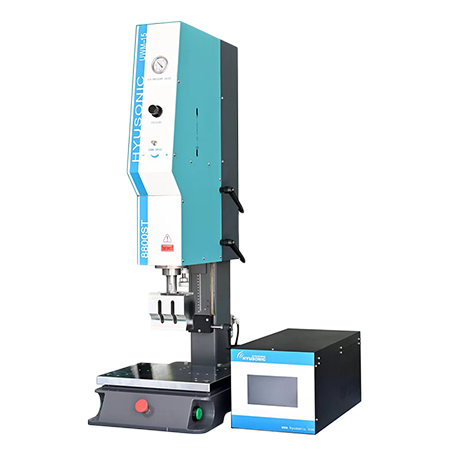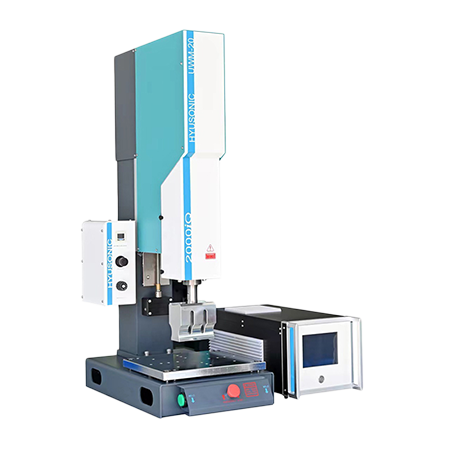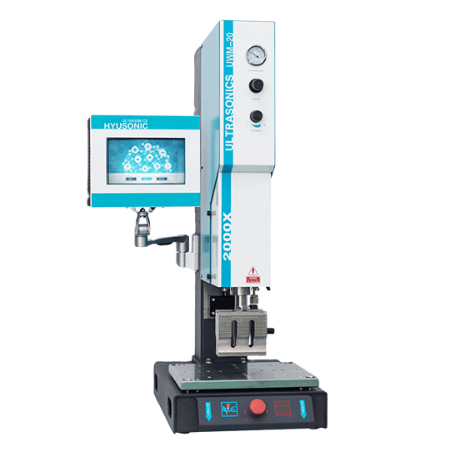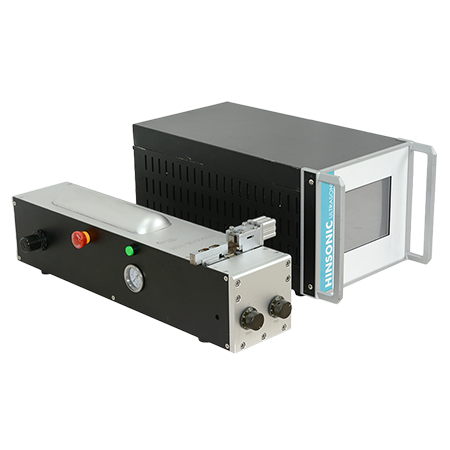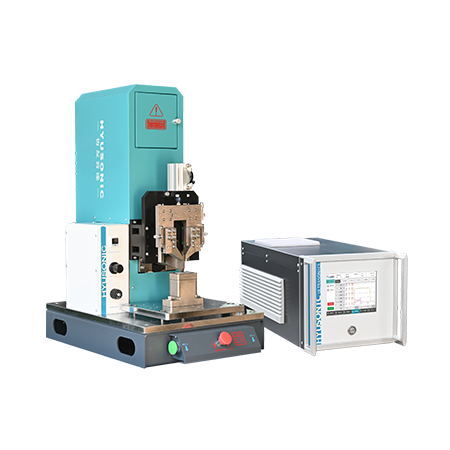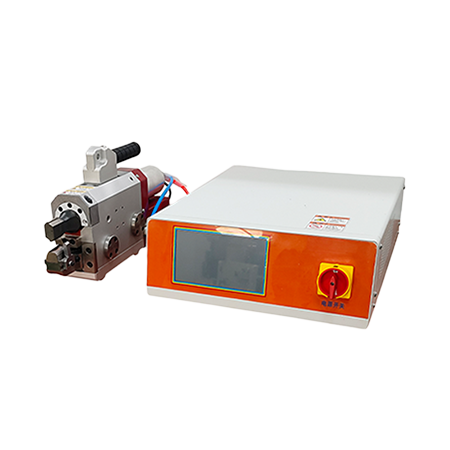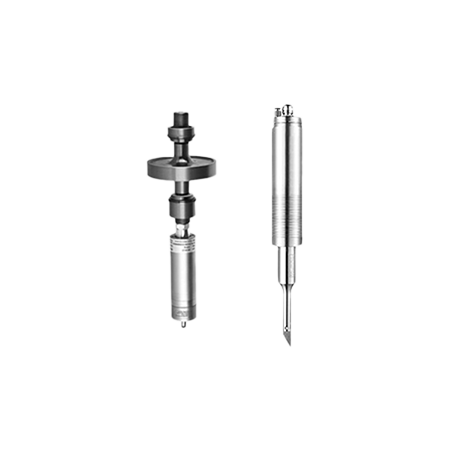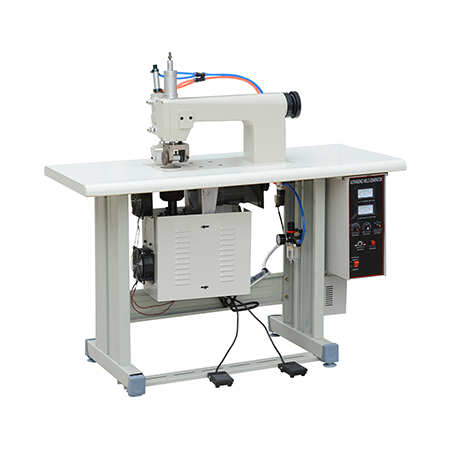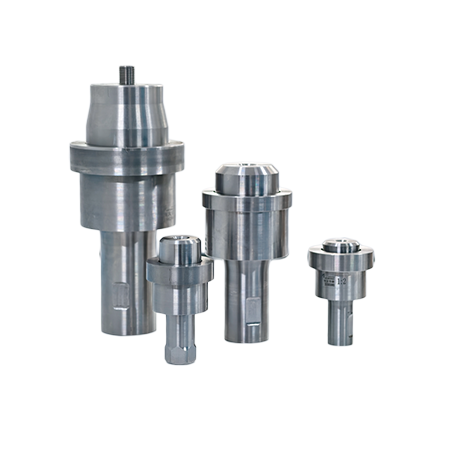Ultrasonic Welders
Hyusonic specializes in high-end intelligent ultrasonic welders, designed for precision joining and cutting in multiple industries. Our advanced systems can be used for plastic welding, metal welding, non-woven fabric welding and cutting, composite material and film welding and cutting, food cutting, tube sealing, nut embedding, riveting, etc.
Hyusonic ultrasonic welders for plastic feature German-imported ultrasonic system, our ultrasonic welders support up to 6 welding modes and 4 triggering methods, with servo-driven precision and automatic frequency tracking.
Ultrasonic plastic welding delivers fast, clean bonding without filler materials, suitable for most thermoplastic materials.
Hyusonic ultrasonic welder for plastic offers different grades and models for selection, including the ST series, iQ series, X series, handheld ultrasonic welder for plastic, and customized automation solutions. Ultrasonic welders for plastic are suitable for welding medical devices, precision electronics, composite material packaging and sealing, non-woven fabrics, etc.
Hyusonic Ultrasonic welders for Metal adopt the modular design for easier component replacement. Our welders deliver a maximum power output of 10,000W, making it ideal for: wire harness welding, busbar welding, terminal welding, battery tab welding, metal tube sealing.
Ultrasonic metal welding ensures high efficiency and low resistance, and it is perfectly suited for power distribution systems and other demanding electrical applications.
Ultrasonic cutting technology is widely used for processing food, rubber materials, non-woven fabrics, plastic components.
Hyusonic offers both Standard ultrasonic cutting equipment and custom automated ultrasonic cutting system.
Our industrial-grade automated cutters are particularly suitable for food processing applications, featuring:
3-axis precision control
Pre-programmable cutting dimensions
Automatic cleaning function
High-efficiency production integration
Ultrasonic Welding System Components consist of: generator (power supply), sonotrode ( horn), transducer (converter), and booster.
Hyusonic ultrasonic welding accessories are fully compatible with our welding machines and feature modular replacement design for easy maintenance.
Additionally, we offer customized solutions tailored to your interface requirements, ensuring compatibility with other brands of ultrasonic welding equipment.
Hyusonic specializes in custom automation equipment manufacturing, delivering cutting-edge automated welding machinery tailored to high-end industrial standards. Leveraging 20+ years of expertise and 1,000+ successful case studies, we integrate advanced welding technologies – including ultrasonic welding, hot plate welding, heat staking, and spin welding – to provide customized plastic welding automation systems for diverse product specifications and material properties.



Customer FAQs
What is ultrasonic welding used for?
Ultrasonic welding can be used to weld thermoplastics and non-ferrous metals, cut food, rubber, non-woven fabrics, thin plastic films, and other composite materials.
Is ultrasonic welding expensive?
Ultrasonic welding has moderate upfront costs (equipment: 5k−50k+dallor) but offers long-term savings via fast cycle times (0.1-1 sec/bond), no consumables (adhesives, fasteners), and low energy use. It is ideal for high-volume production (e.g., medical devices, automotive). Small batches may be costlier than alternatives like solvent bonding.
Can PEEK be welded?
PEEK (polyetheretherketone), with a high melting point of 343°C, can be welded using high-frequency ultrasonic plastic welding machines (40kHz) with precise temperature control. While challenging due to its thermal stability and semi-crystalline structure, ultrasonic welding offers a viable solution for applications requiring rapid, localized energy input—such as medical implants or aerospace components—by optimizing amplitude (30-50 μm) and pressure to prevent polymer degradation.
How strong is ultrasonic welding?
Ultrasonic welding excels in application diversity and material adaptability beyond mechanical strength. It’s widely used in automotive (battery seals, sensors), medical (syringe joints), and electronics (micro-component bonding). Compatible with plastics (ABS, PC, PEEK), composites (PET/Al foil), and fabrics (non-wovens). Strengths include:
Precision: 0.1mm tolerance, no thermal damage;
Speed: 0.1–1 sec/bond, ideal for high-volume production;
Eco-efficiency: No adhesives, 90% lower VOC vs chemical methods.
Strongest in thin-section (<6mm) thermoplastics with 80-100% base material strength.
Send your inquire now
Unique advantages of ultrasonic welding
There are many processes capable of joining plastics, such as hot melt, hot plate, laser, infrared, and adhesive bonding. Compared to these processes, what unique advantages does ultrasonic welding offer?
- First, ultrasonic welding is highly suitable for welding small, high-precision products, a challenge for hot plate and hot melt processes.
- Second, it allows strict control over the welding appearance, reducing defects like overflow and burrs.
- Third, ultrasonic welding stands out for its speed, significantly improving production efficiency and reducing labor costs compared to other welding processes.
- Fourth, it flexibly adapts to automated production lines, enabling efficient mass production with ease.
- Finally, for precision products requiring high-accuracy mass production—such as those in electronics, medical, and automotive industries—ultrasonic welding is the definitive choice. It simultaneously meets requirements for sealing, appearance yield, production efficiency, and welding strength.

